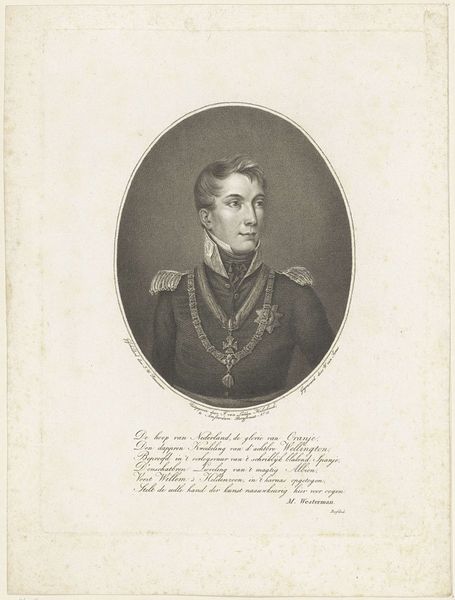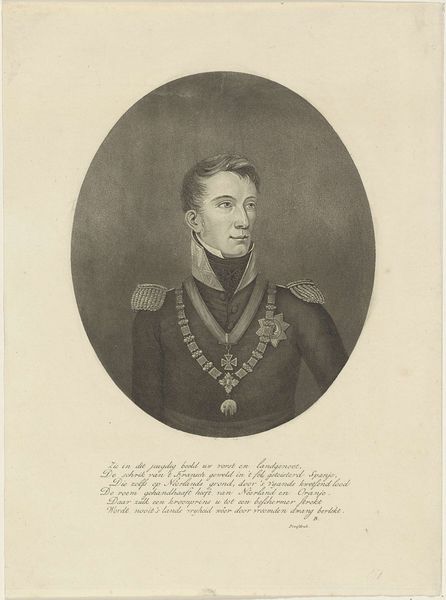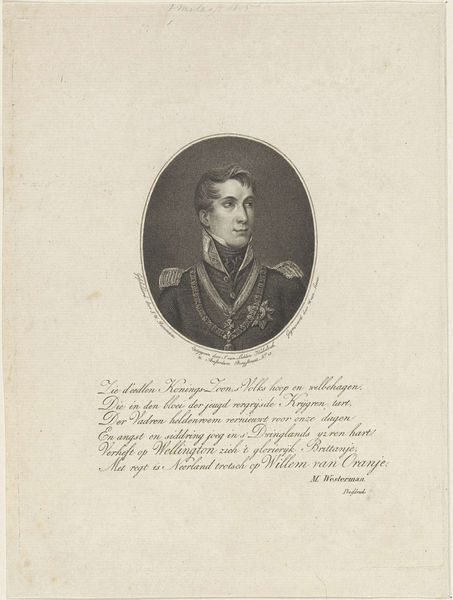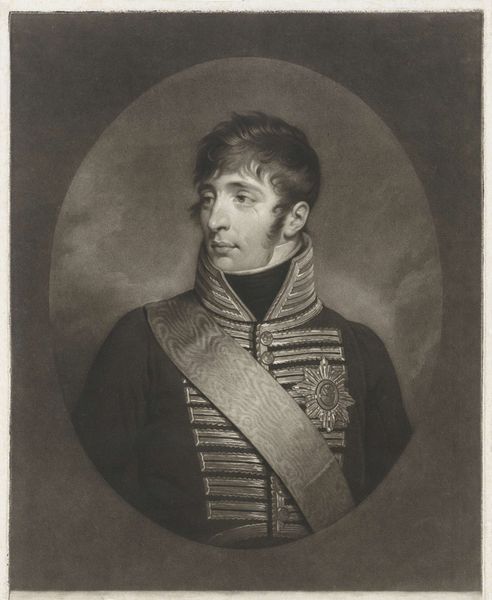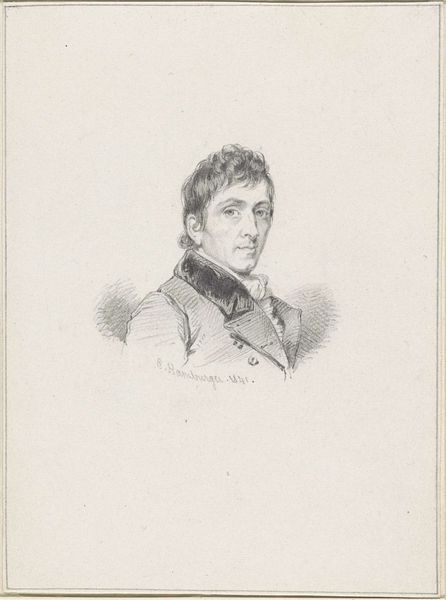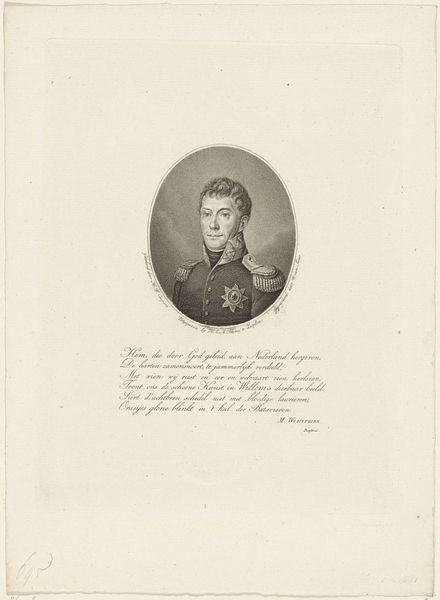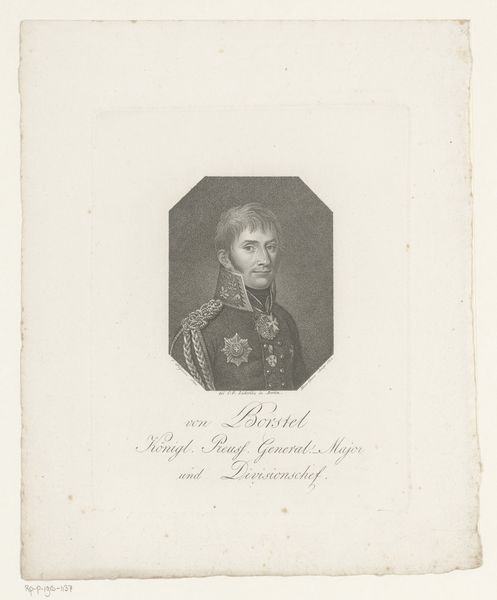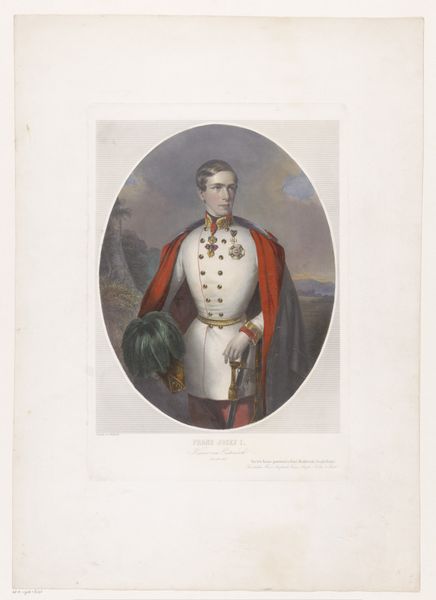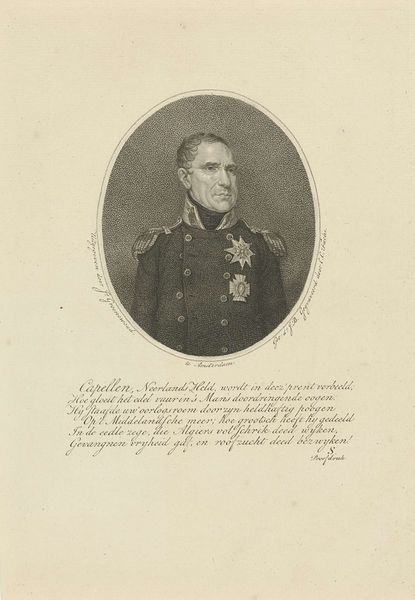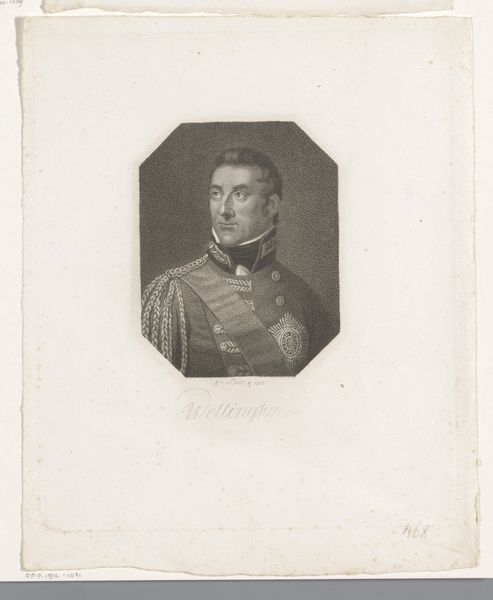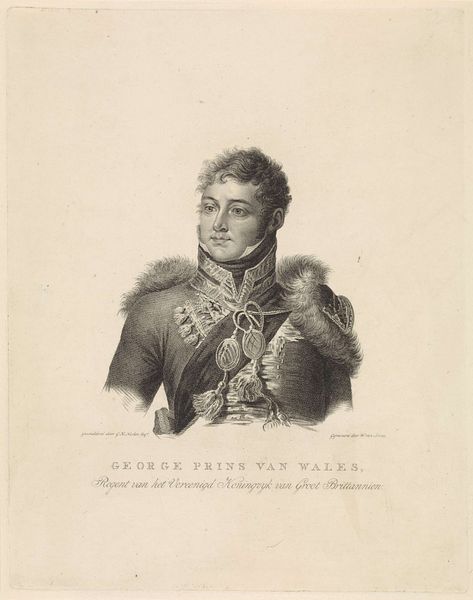
painting, watercolor
#
portrait
#
painting
#
watercolor
#
historical photography
#
historical fashion
#
romanticism
#
watercolour illustration
#
history-painting
#
academic-art
#
watercolor
Dimensions: height 280 mm, width 212 mm
Copyright: Rijks Museum: Open Domain
Curator: Willem van Senus captured this portrait of Willem II, King of the Netherlands, sometime between 1814 and 1819. It's a watercolor painting, currently held at the Rijksmuseum. What's your initial reaction to it? Editor: Well, he definitely seems to take himself seriously! I mean, the uniform, the medals... it's all very stately, but the soft watercolor gives it an almost dreamlike quality, doesn't it? Like he's posing for a historical romance novel cover. Curator: Indeed. The piece really emphasizes Willem II's position in the aftermath of the Napoleonic era, situating him within the burgeoning national identity of the Netherlands. The romantic style used here emphasizes heroism and the noble aspects of leadership at the time. Editor: Absolutely. It's interesting how even in official portraiture, we still crave some sort of vulnerability. His gaze is intense but also a bit…uncertain? Like he's asking, "Am I doing this right? Am I regal enough?" We all have that feeling sometimes, I think. Even kings! Curator: The romanticism style prevalent at this time did serve the function of bolstering feelings of cultural and national pride following years of war and political upheaval across Europe. Consider that he wears the Order of William, which would be the highest honor in the kingdom of the Netherlands. The use of watercolor allows for a level of detail alongside that soft effect you observed, blurring any potential imperfections or hints of less than idealized masculinity, especially during this tumultuous historical period. Editor: It also makes him seem less intimidating! A king you might want to have a beer with…or perhaps collaborate on a melancholic poem with after said beer! What do you think this image conveys about perceptions of leadership? Curator: The painting embodies that tension of projecting power while simultaneously wanting to connect with the populace, mirroring political considerations during a critical period of transition for the Netherlands. The Dutch identity was actively constructed and celebrated at this moment through portrayals of royalty. Editor: Yes. So, it is not only just a pretty portrait but also a political statement in visual form! It does invite viewers to contemplate the weight of leadership. Looking at it makes me consider that behind all the medals and regalia there were just real human beings trying to steer the ship through uncharted waters. Curator: Precisely. Examining artworks like this reminds us that they are rarely just beautiful pictures; they are cultural and political artifacts imbued with complex narratives that shape the way we understand history. Editor: It also illustrates our own expectations, and fantasies about authority... Thanks, Willem II, for making us think!
Comments
No comments
Be the first to comment and join the conversation on the ultimate creative platform.

